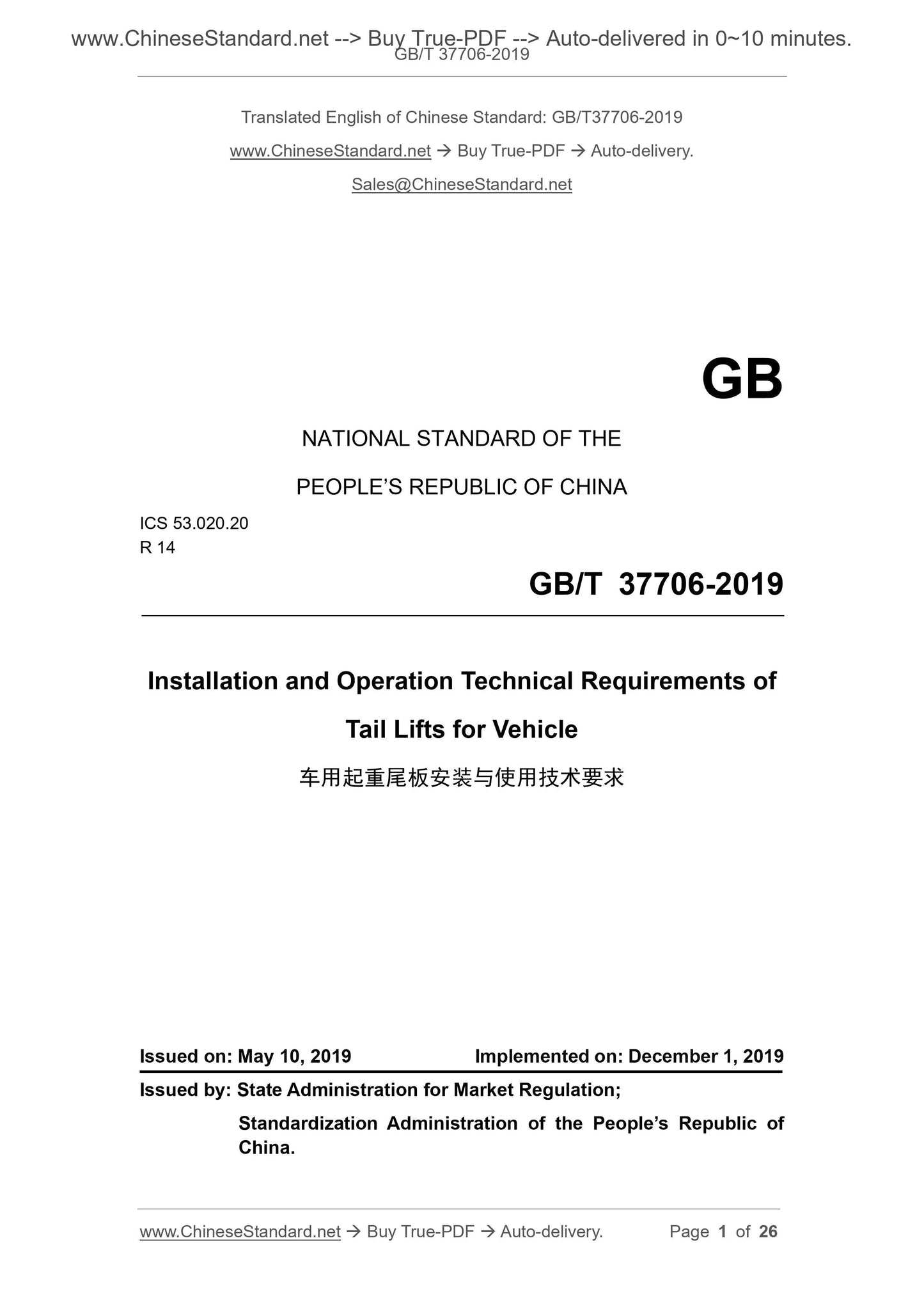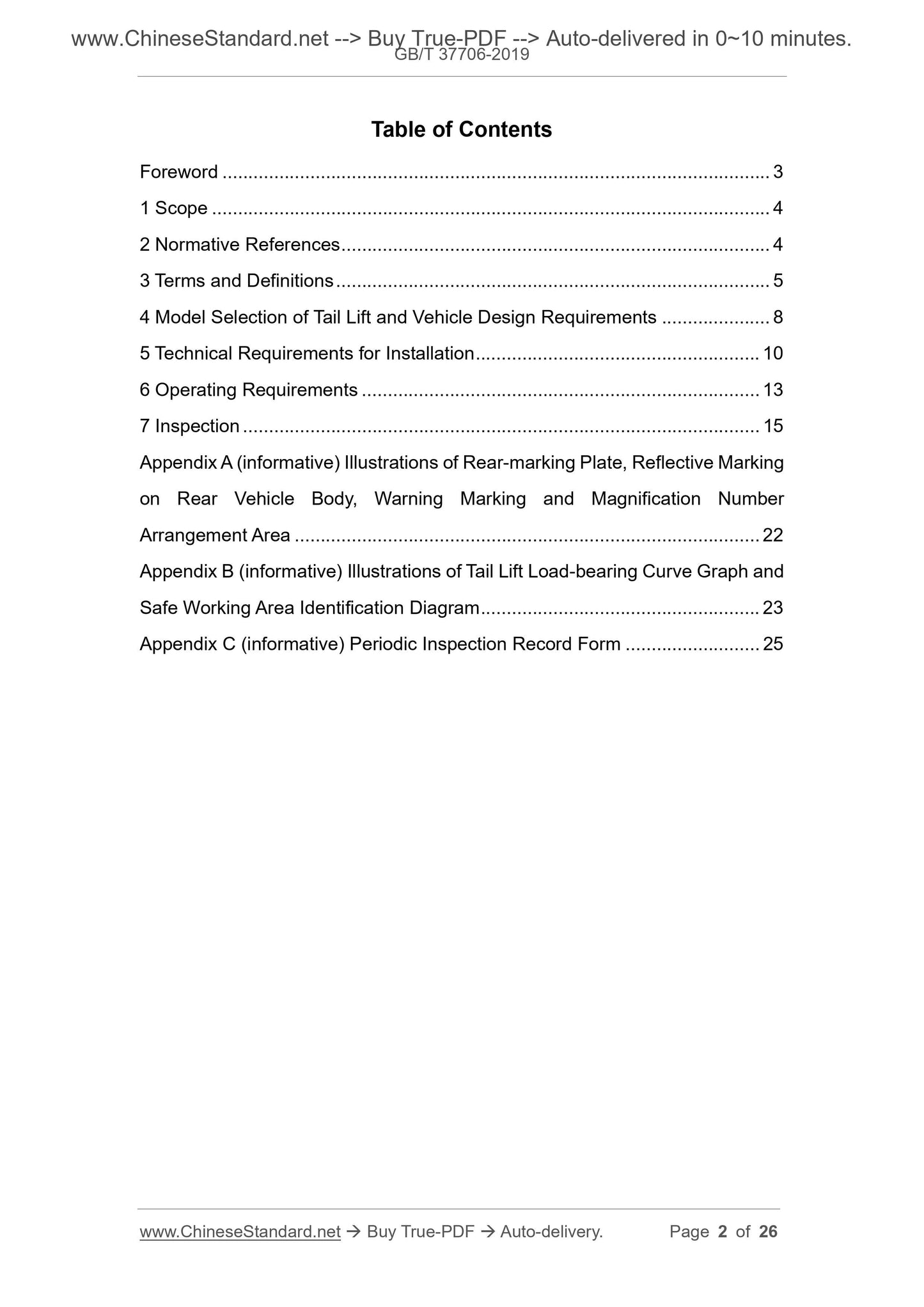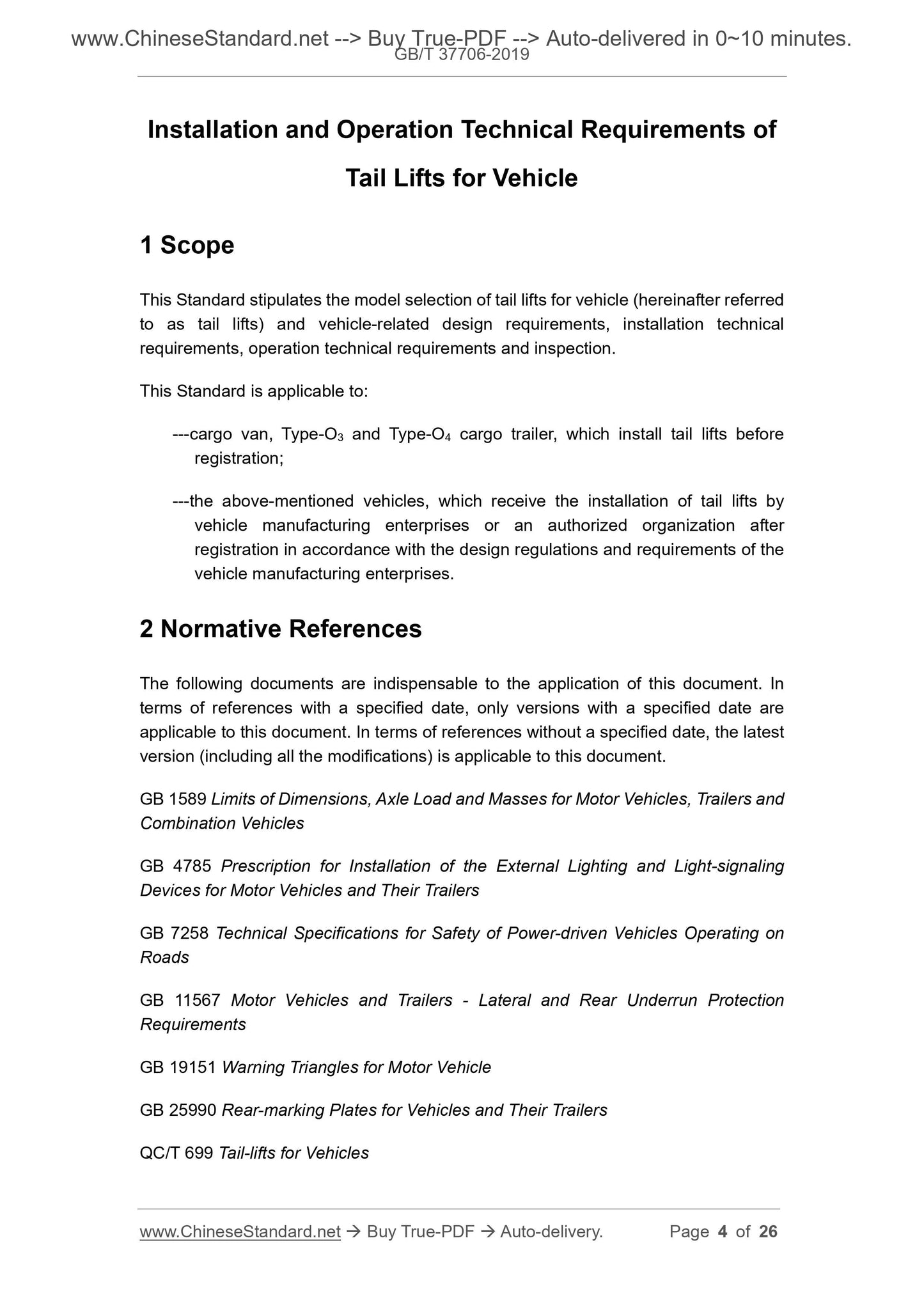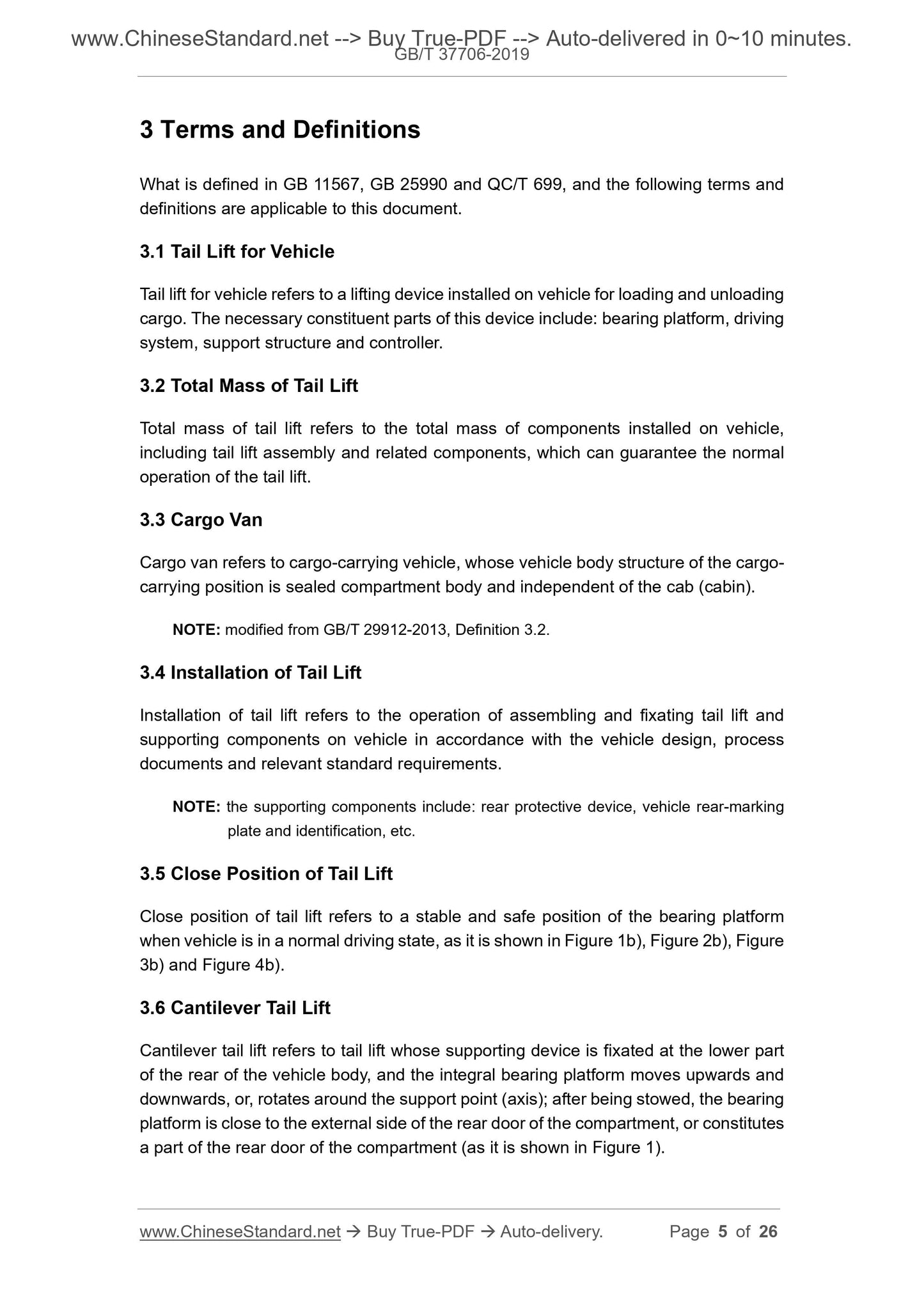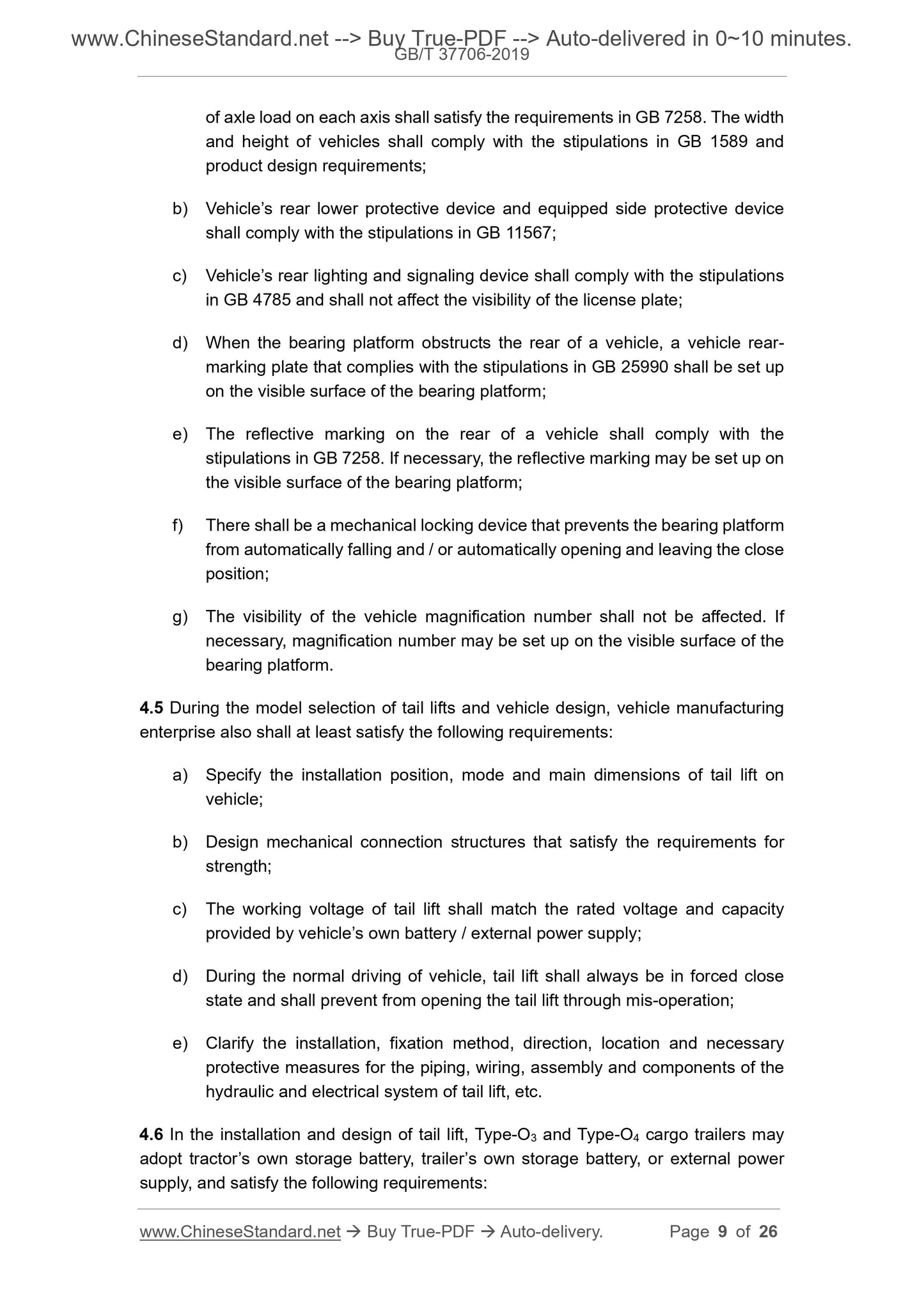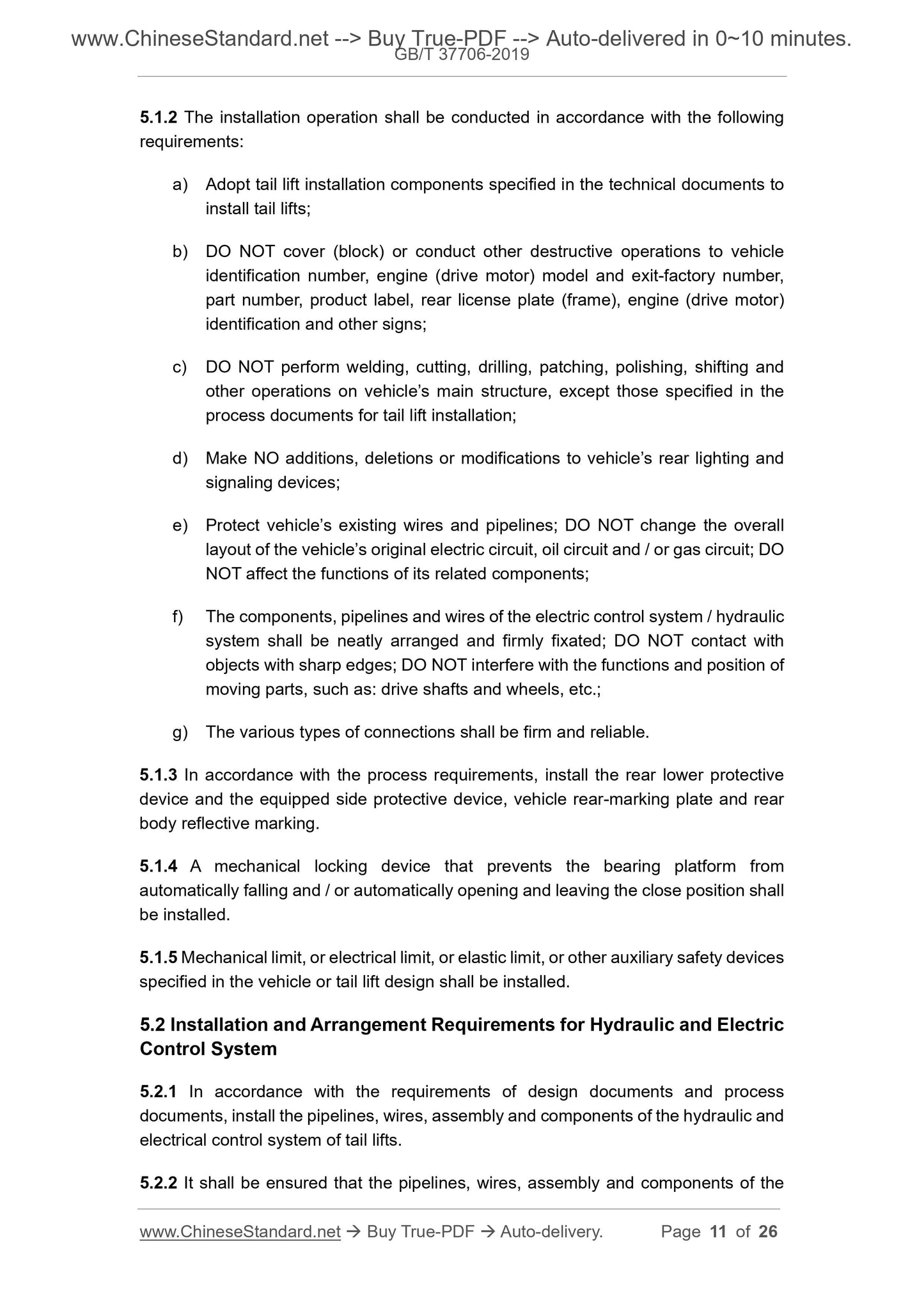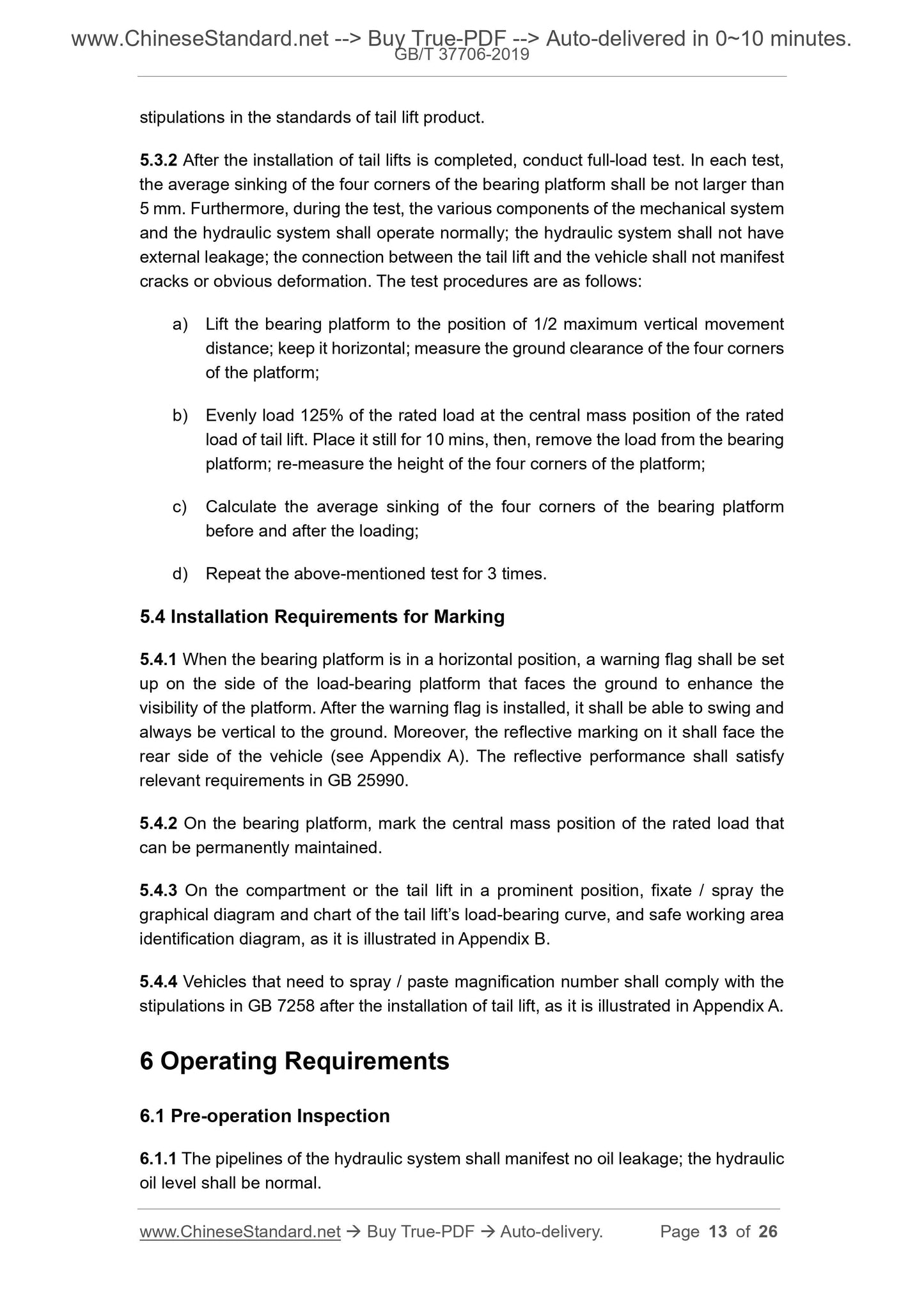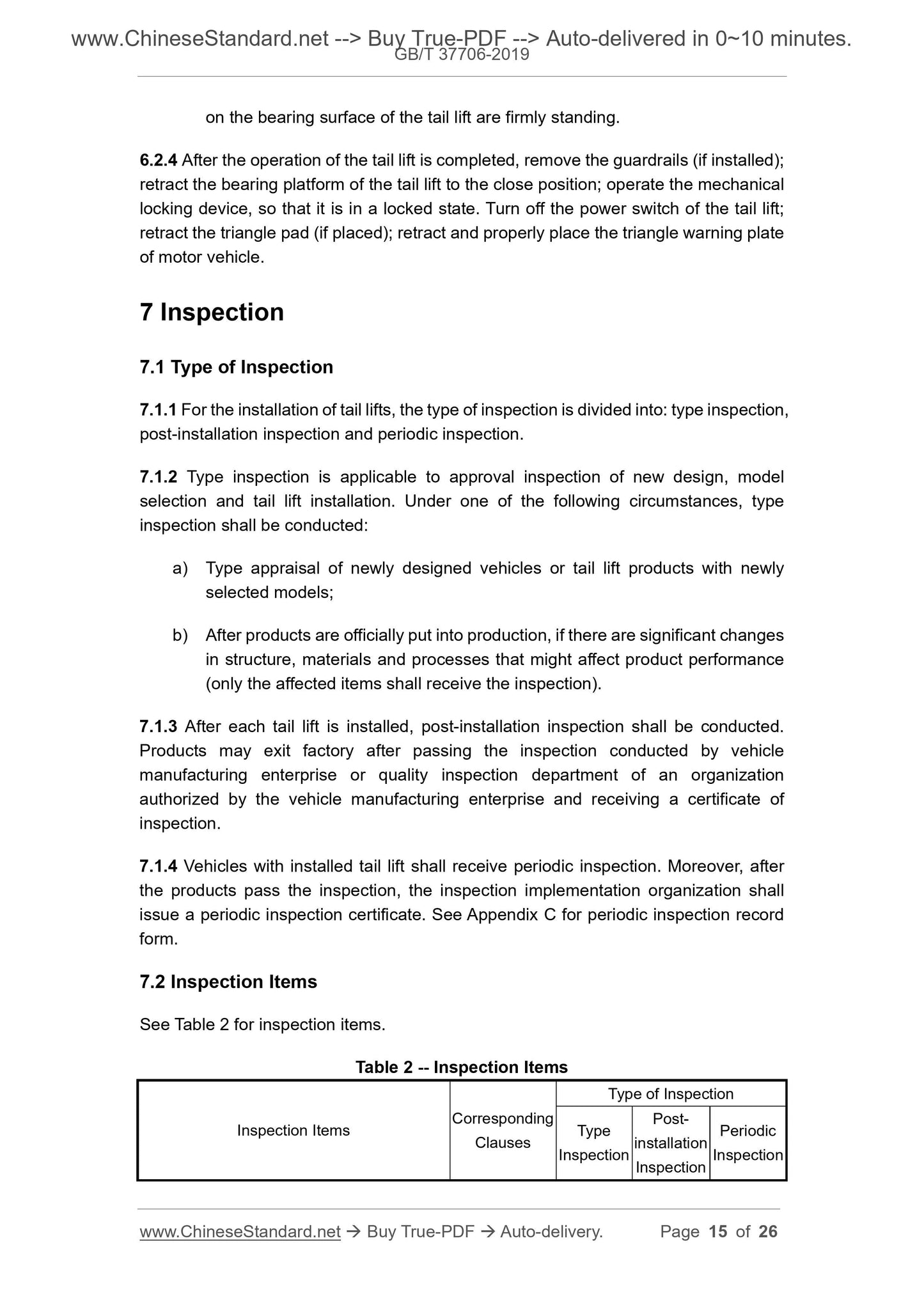1
/
of
8
www.ChineseStandard.us -- Field Test Asia Pte. Ltd.
GB/T 37706-2019 English PDF (GB/T37706-2019)
GB/T 37706-2019 English PDF (GB/T37706-2019)
Regular price
$190.00
Regular price
Sale price
$190.00
Unit price
/
per
Shipping calculated at checkout.
Couldn't load pickup availability
GB/T 37706-2019: Installation and Operation Technical Requirements of Tail Lifts for Vehicle
Delivery: 9 seconds. Download (and Email) true-PDF + Invoice.Get Quotation: Click GB/T 37706-2019 (Self-service in 1-minute)
Newer / historical versions: GB/T 37706-2019
Preview True-PDF
Scope
This Standard stipulates the model selection of tail lifts for vehicle (hereinafter referredto as tail lifts) and vehicle-related design requirements, installation technical
requirements, operation technical requirements and inspection.
This Standard is applicable to:
---cargo van, Type-O3 and Type-O4 cargo trailer, which install tail lifts before
registration;
---the above-mentioned vehicles, which receive the installation of tail lifts by
vehicle manufacturing enterprises or an authorized organization after
registration in accordance with the design regulations and requirements of the
vehicle manufacturing enterprises.
Basic Data
| Standard ID | GB/T 37706-2019 (GB/T37706-2019) |
| Description (Translated English) | Installation and Operation Technical Requirements of Tail Lifts for Vehicle |
| Sector / Industry | National Standard (Recommended) |
| Classification of Chinese Standard | R14 |
| Classification of International Standard | 53.020.20 |
| Word Count Estimation | 18,129 |
| Date of Issue | 2019-05-10 |
| Date of Implementation | 2019-12-01 |
| Issuing agency(ies) | State Administration for Market Regulation, China National Standardization Administration |
Share
